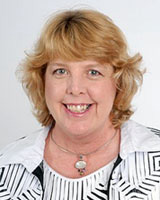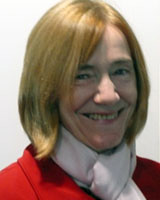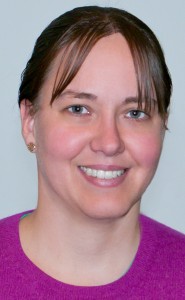The Australian Government designed the rural clinical schools (RCS) program in the late 1990s as a workforce strategy to address the shortage of medical practitioners within rural and remote Australia1. The RCS program was merged with the Rural Undergraduate Support and Coordination program (RUSC) in 2011 and is currently known as the Rural Clinical Training and Support (RCTS) program. The RCTS program is implemented across Australia in 18 RCSs and regional medical schools (RMSs), with an estimated combined staff of nearly 1000 people.
The Federation of Rural Australian Medical Educators (FRAME) was formed in 2003 to address common areas of interest and importance for academics working in the RCS and RUSC programs that were not able to be met in a focused way by other current national organisations2. FRAME is the peak body representing RCSs and RMSs.
In 2006, FRAME initiated a national exit survey to collect demographic, educational, experiential and intentional data from students completing their RCS experience3.The FRAME survey aims to support RCS/RMS to report to the RCTS Commonwealth parameters, to progress knowledge creation regarding rural medical education, and to provide external groups with the opportunity to commission research3.
There is a large amount of published information about the RCTS program and rural medical student cohorts that have been through the rural and regional clinical schools undertaking short- and long-term rotations4-6. However, very little is known about the academic and professional staff involved in the program, which represents a knowledge gap that may impact workforce and succession planning, as well as staff training. To address this, FRAME initiated the pilot 2014 RCTS Snapshot survey to obtain data on the current RCS and RMS staff workforce.
The study was designed as a brief anonymous, semi-structured web-based survey (Survey Monkey; http://www.surveymonkey.com).
The target population was all professional, academic and clinical academic staff (fixed-term and continuing, regardless of fraction) employed at RCSs and RMSs funded through the Australian Government's RCTS program. (For simplicity. the term 'RCS' will be used from here onwards.)
One researcher (JB) contacted each of the RCSs and obtained estimates of the total number of staff employed who were eligible to participate in the survey. Numbers provided by all RCSs were tallied to calculate the number of staff employed at all RCSs across Australia. This figure was used to calculate the response rate to the survey.
The study was advertised on the AUSFRAME website7, the official website of FRAME. An invitation to participate in the study was distributed through the FRAME email list. Each of the RCSs was also notified individually about the study and asked to distribute an email invitation to all eligible staff.
The survey was conducted from March to June 2014. The 18 quantitative variables incorporated into the survey included demographics (age and gender), rural background and exposure, employment history in rural/regional areas and at RCSs, experience and expertise; reasons for working at RCSs, and future employment intentions (see Appendix I for the survey questionnaire). For the latter three variables an open-ended, qualitative format to the survey question allowed respondents to provide additional details beyond the options given in the question.
Survey responses were analysed with the Statistical Package for the Social Sciences v21 statistics (IBM; http://www.spss.com.au). Descriptive statistics have been used to describe closed responses. Thematic analysis of open-ended responses was performed.
Ethics approval
This study was approved by the University of Western Sydney Human Research Ethics Committee (Approval #H10418), with reciprocal approval granted by all other authors' affiliated institutes. The support of the schools/departments with which each RCS were associated was obtained prior to making contact with their RCS regarding the study.
A total of 413 responses to the survey were received. Sixteen were incomplete and were excluded from the analysis. A total of 397 responses were analyzed from 246 (62%) professional and 151 (38%) academic respondents. Estimated staff numbers across all RCSs totalled 970, giving a response rate for the survey of 41%.
Table 1 includes the sociodemographic information, appointment fraction and primary working location of RCS staff. The age group younger than 40 years had more professionals than academics (21% vs 12%) and more than 62% of academics were aged over 50 years. Notably, there were no academics younger than 30 years. Female staff were in the majority (71% of all respondents). Ratios of females to males approximated 4:1 for professional staff and 3:2 for academic staff. Whilst half of professional staff were contracted to work full time, only a quarter of academic staff are full time. One-fifth of academics reported working at 0.5 full-time equivalent. The primary working location of most staff (87% of professional and 83% of academics) was an inner regional or outer regional area.
Table 2 summarises the background of RCS staff and their previous exposure to rural areas. 62% of professional staff report having a rural background while 58% of academics reported an urban background. However, 70% of the academics had exposure to rural areas as an adult and 32% had a rural experience as part of their university or TAFE education. Very few respondents (9% of professional staff and 7% of academics) reported having had no rural exposure at all at any stage of their lives.
Table 3 summarises the employment history of RCS staff, their future employment intentions and their reasons for working at an RCS. Almost three-quarters of all respondents (professionals and academics) had been working in a rural/regional area for over 10 years, with a large proportion of that time (3-10 years) being at an RCS.
Over 50% of all respondents reported that they were intending to stay working at their RCS for more than 5 years; 16% of professional staff and 8% of academic staff chose 'other' as their response to this question and gave further detail. The most popular theme that emerged was that their roles at the RCS were dependent on funding and were contract-based, particularly for professional staff. Comments indicated that the majority enjoyed their jobs and would stay as long as possible but they were employed on contracts so this may not be possible:
For as long as I have a position (professional staff member)
As long as my contract lasts. Forever I hope (academic staff member)
Dependent on contract renewal (professional staff member)
The second most common theme in the other category was 'unknown or undecided'. This uncertainty may be related to contracts and funding. There are likely some respondents who feel that they cannot make this determination as the continuation of their role is contingent on funding and contract availability:
As I'm on a year to year contract, length is determined by whether my contract is renewed not my intentions (professional staff member)
The third theme drawn out from the comments was 'retirement'. This shows that staff are committed to their roles at the RCS but retirement looms on their horizon and their departure is inevitable:
Hopefully until I retire ... I love my job! (professional staff member)
It depends upon funding for my position, but hopefully until I reach retirement age (approx. 8 years) (professional staff member)
Respondents reported various reasons for working at RCSs (Table 3). Those that were common to both academic and professional staff were lifestyle, importance of student training in rural settings, and their upbringing in a rural/remote area. Financial reasons were high up on the list for professional staff but not for academics (46% vs 15%), while importance of student training in rural settings was valued highly by academics (76%).
A total of 82 respondents (21%) offered other reasons for working at an RCS. One of the major identified themes related to the opportunity that the role provided. This encompassed both the professional opportunity and seniority of the role, which is difficult to find in a rural area, as well as the intellectual satisfaction and flexible/autonomous working environment provided at an RCS:
Limited opportunities for management roles at a senior level in rural areas (professional staff member)
More challenging and rewarding professional environment, general freedom [from] university bureaucracy (professional staff member)
It seems that the opportunity a role at the RCS presents is for some academics more important than the financial remuneration provided, as one respondent commented:
Certainly not financial - took a pay cut to work here (academic staff member)
Passion and commitment to rural health and training rural doctors was another dominant theme that featured in the comments:
It is important to support training of medical practitioners in the rural setting as it is the only way to overcome the ignorance of ivory tower city-centric training. It has been very successful in the recruitment and retention of rural medical workforce! (professional staff member)
Being fortunate to live in both the city and also remote Australia the marked contrast in access to health and education is numbing. Having experienced the challenges of being a student from a rural area in a major city university where rural was not mentioned, it is gratifying to be able to be employed by a medical school with a rural focus. I can also not say enough about the forward thinking, creative people I work with who have [a focus on] addressing the shortage of health professionals in rural and remote Australia in their hearts (academic staff member)
Very passionate about rural health and continuing need to build capacity in rural workforce, promote rural health (academic staff member)
Living in a rural area prior to accepting a role, or being exposed to rural areas through other work or personal experiences, was highlighted:
I am a regional clinician so teach in the hospital I work at (academic staff member)
Indigenous heritage was also noted:
I am a traditional owner and this is my ancestral land (professional staff member)
Table 4 summarises the experience and expertise of staff working at RCSs. More than half of the professional staff reported administration as one of their areas of expertise (56%). Management, education and clinical were listed as areas of expertise for around one-quarter of staff. Only 7% of professional staff reported information technology (IT) as a skill. Areas of expertise not elsewhere listed were provided by 10% of respondents in the other section. These included marketing/promotion, recruitment/engagement, project management, librarian, e-learning, simulation and counselling.
Most academic staff (83%) reported having a clinical background with an equal number between general and specialist practice backgrounds. Clinical academic staff are highly experienced with 93% of respondents having greater than 10 years clinical experience and 77% of respondents still in clinical practice.
When asked about the possibility of FRAME sponsoring a leadership program to support succession planning at RCSs, over 80% of professional and academic staff agreed this was an idea they would like to see implemented. Attendance at FRAME meetings is not commonplace, however, with 77% of professional staff and 66% of academic staff reporting never having attended a meeting.
Table 1: Sociodemographics, appointment fraction and primary working location of rural clinical school staff
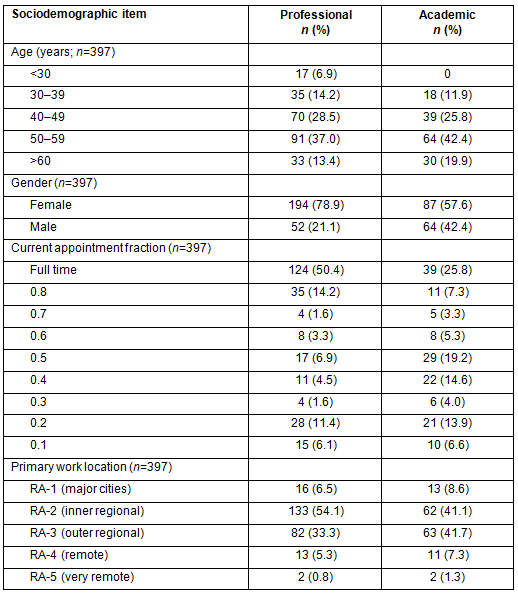
Table 2: Background of rural clinical school staff
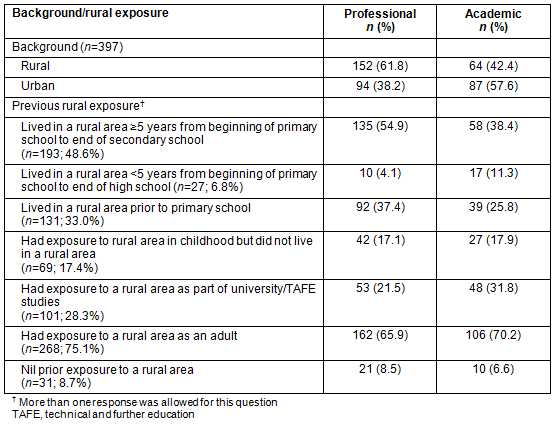
Table 3: Rural clinical school staff employment history, reasons for working at a rural clinical school and their future intentions
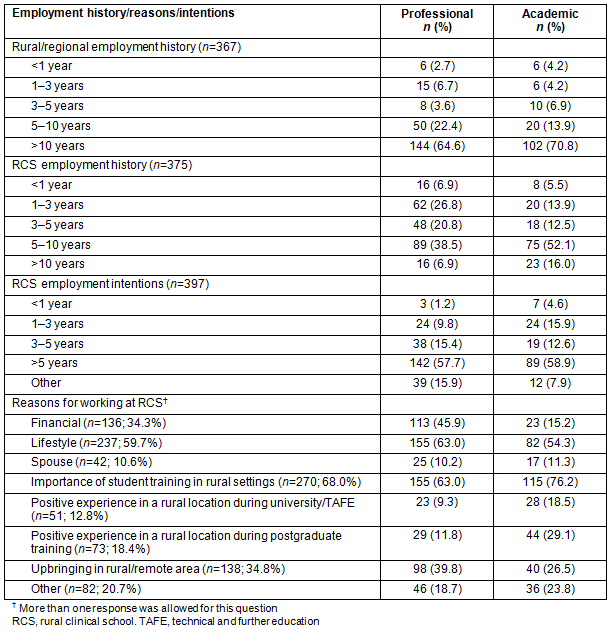
Table 4: Experience and expertise of professional and academic rural clinical school staff

Discussion
This pilot study of the Australian rural and regional clinical school staff found that both the professional and academic staff are passionate about their role in developing the rural health workforce through rural and regionally based student training. Some clinicians indicated they had taken a salary cut to join an RCS, while for most professionals it's one of the most financially rewarding jobs available in a rural or regional town. The findings of this pilot Snapshot survey are indicative of the high level of expertise in both professional and academic staff employed at RCSs. The RCTS program has been successful in attracting and retaining clinicians and skilled professionals, hence building the intellectual capital in rural areas.
Among the participants, professional staff with a rural background (62%) were more common than academics with a rural background (42%). However, an important factor to note is that more than 70% of academics had previous exposure to a rural area as an adult and 32% reported exposure as a part of university or the TAFE (technical and further education) system. Therefore, a positive rural exposure during adulthood may be important in encouraging academics with an urban background to work in rural and regional areas, similar to what has been shown for Australian medical graduates8,9. Further exploration of this finding in future studies might inform ongoing recruitment and retention practices to sustain the RCS academic workforce.
The RCS academic workforce has an even balance of specialists and generalists with 20% over the age of 60 years and more than 62% over 50 years of age. Schofield et al flagged the issue of the ageing baby boomer and older cohorts of general practitioner and specialist workforces in Australia10. They predicted that there would be shortages in the availability of experienced educators for medical schools from 201510. Succession planning was one of the important factors for the initiation of the Snapshot survey and the results highlight that a significant proportion of RCS staff, particularly academics, are approaching retirement age. It is encouraging to know that the majority of professional and academic staff (84%) were supportive of a FRAME-sponsored leadership and succession program which might be implemented to help prevent this predicted future shortage of experience within RCSs. The new rural generalist training program11,12, which is focused on recruiting junior doctors at a younger age, will hopefully rectify the paucity of young rural academics and also contribute to succession within RCSs. It is known that the majority of practising medical clinicians within rural and remote areas are male13. However, in this study female doctors who were academics were in the majority (58%). In 2013, Playford et al reported the significant numbers of women relative to men in a rural academy from Western Australia14. The present study seems to confirm their view that 'female doctors in the rural workforce have embraced the part-time teaching role'. This represents another avenue that can be targeted during succession planning.
IT services remain a vital service segment in regional and rural Australia for the provision of healthcare services from teleconferencing to telehealth15. Further, the availability of online education for the continuing professional development of clinicians in regional and rural locations is increasing, as is the use of videoconferencing for delivering medical lectures to rural students. However, this survey has indicated that among the professional staff only 7% consider themselves IT experts. The low IT expertise at the RCSs may need to be explored much further to prevent a 'rural ehealth paradox'16.
A 3-minute survey is not the ideal way to understand a long-term RCS workforce. One limitation of this study is that it is not know how representative the sample of 41% is of the 970-strong workforce of the RCTS program since no specific data about this group within the higher education workforce has been published. In this study, the majority of respondents were females (71%); this breakdown differs from data reported from the 2011 Australian census17. Australia-wide data for people living in regional and remote areas showed equal proportions of men and women, with some variation between remoteness areas by state and territory. As this survey was anonymous, it is not possible to break down responses by state or territory remoteness areas for further comparison. However, data from the Australian Government for 2014 reports a 56% prevalence of females employed as academics in Australian universities18, very similar to the 58% recorded here for female RCS academics. In a 2013 report on forms of employment, the Australian Bureau of Statistics reported that females constituted 75% of clerical and administrative workers19. This is similar to the figure for female professional staff (79%) found here.
This study has provided valuable insights into professional and academic staff views and aspirations about the RCTS program (beyond high quality rural student education). This first data on the current RCS workforce provide a benchmark to which future surveys of the RCS workforce can be compared to monitor trends in turnover or predict future shortages due to cohort ageing. A more detailed qualitative study could further explore some of the data that this snapshot survey has revealed and inform the development of succession strategies within RCSs to address future potential staff shortages uncovered by this survey.
References
1. Australian Government Department of Health. Rural Clinical Training and Support (RCTS) 2011-2014 - operational framework: introduction. (Online) 2013. Available: http://www.health.gov.au/internet/publications/publishing.nsf/Content/work-st-rcts-2011-14-toc~work-st-rcts-2011-14-int (Accessed 2 June 2015).
2. Federation of Rural Australian Medical Educators. Background. (Online) 2014. Available: http://www.ausframe.org/index.php/home/background (Accessed 2 June 2015).
3. DeWitt DE, McLean R, Newbury J, Shannon S, Critchley J. Development of a common national questionnaire to evaluate student perceptions about the Australian Rural Clinical Schools Program. Rural and Remote Health 5(3): 486. (Online) 2005. Available: www.rrh.org.au (Accessed 2 June 2015).
4. Clark TR, Freedman SB, Croft AJ, Dalton HE, Luscombe GM, Brown AM, et al. Medical graduates becoming rural doctors: rural background versus extended rural placement. The Medical Journal of Australia 2013; 199(11): 779-782.
5. Walker JH, Dewitt DE, Pallant JF, Cunningham CE. Rural origin plus a rural clinical school placement is a significant predictor of medical students' intentions to practice rurally: a multi-university study. Rural and Remote Health 12: 1908. (Online) 2012. Available: www.rrh.org.au (Accessed 2 June 2015).
6. Sen Gupta T, Woolley T, Murray R, Hays R, McCloskey T. Positive impacts on rural and regional workforce from the first seven cohorts of James Cook University medical graduates. Rural and Remote Health 14: 2657. (Online 2014). Available: www.rrh.org.au (Accessed 2 June 2015).
7. Federation of Rural Australian Medical Educators. FRAME home. (Online) 2014. Available: http://www.ausframe.org (Accessed 2 June 2015).
8. Somers GT, Strasser R, Jolly B. What does it take? The influence of rural upbringing and sense of rural background on medical students' intention to work in a rural environment. Rural and Remote Health 7(2): 706. (Online) 2007. Available: www.rrh.org.au (Accessed 2 June 2015).
9. Wilkinson D, Laven G, Pratt N, Beilby J. Impact of undergraduate and postgraduate rural training, and medical school entry criteria on rural practice among Australian general practitioners: national study of 2414 doctors. Medical Education 2003; 37(9): 809-814.
10. Schofield DJ, Fletcher SL, Callander EJ. Ageing medical workforce in Australia - where will the medical educators come from? Human Resources for Health 2009; 7: 82.
11. Australian College of Rural and Remote Medicine. Rural generalist medicine. (Online) 2014. Available: http://acrrm.org.au/the-college-at-work/rural-generalist-medicine (Accessed 2 June 2015).
12. Health Education and Training Institute. Rural generalist training program. (Online) 2014. Available: http://www.heti.nsw.gov.au/rural-and-remote/rural-generalist-training/ (Accessed 2 June 2015).
13. Tolhurst HM, Talbot JM, Baker LL. Women in rural general practice: conflict and compromise. Medical Journal of Australia 2000; 173(3): 119-120.
14. Playford DE, Worthington R, Riley G. Women in the rural medical academic workforce. Rural and Remote Health 13(3): 2309. (Online) 2013. Available:
www.rrh.org.au (Accessed 2 June 2015).
15. Australian Telehealth Society. Towards a national strategy for telehealth in Australia 2013-2018. (Online) 2013. Available: http://aths.org.au/wp-content/uploads/2013/05/TelehealthStrategy.pdf (Accessed 2 June 2015).
16. Liaw ST, Humphreys JS. Rural ehealth paradox: it's not just geography! Australian Journal of Rural Health 2006; 14(3): 95-98.
17. Australian Bureau of Statistics. Census 2011 - advanced search - geographies by remoteness areas. (Online) 2015. Available: http://www.abs.gov.au/websitedbs/censushome.nsf/home/map (Accessed 2 June 2015).
18. Australian Government Department of Education and Training. Selected higher education statistics - 2014 staff data: staff numbers. (Online) 2015. Available: http://www.education.gov.au/selected-higher-education-statistics-2014-staff-data (Accessed 2 June 2015).
19. Australian Bureau of Statistics. Forms of employment, Australia, November 2013: Data Cubes - EMPLOYEES, whether worked on a fixed-term contract in main job - by industry and occupation of main job - by sex. Cat. no. 6359.0. (Online) 2014. Available: http://www.abs.gov.au/AUSSTATS/abs@.nsf/DetailsPage/6359.0November%202013?OpenDocument (Accessed 2 June 2015).
_____________________________
Appendix I: Rural Clinical Training and Support Snapshot survey


